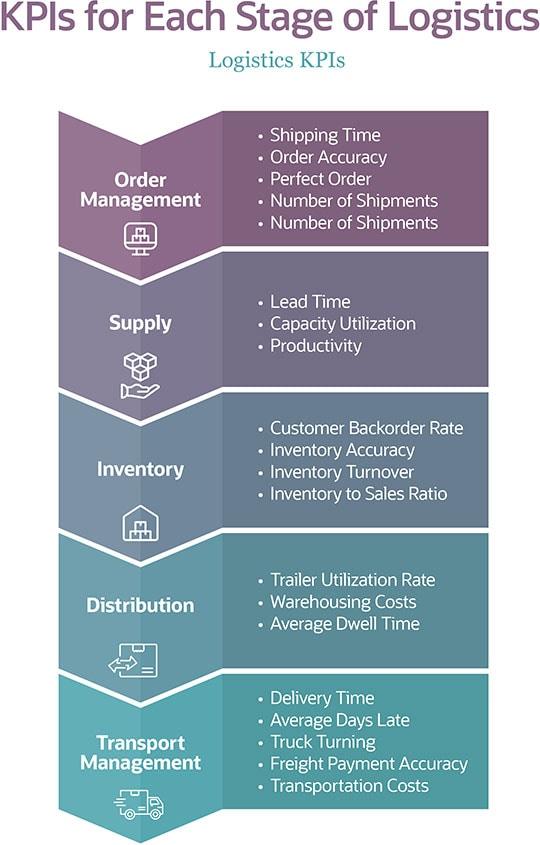Imagine a well-oiled machine humming along, each cog turning in sync with the others, all working towards a common goal. This is the ideal scenario for any business, and in the world of logistics, transport, and shipping, alignment is crucial. In this article, we will explore the importance of metrics that are not only aligned with strategic objectives but also linked to the shop floor or line-level workers. Join us as we delve into the complexities of this interconnected web and discover how it can lead to greater efficiency and success in the fast-paced world of logistics.
Key Metrics for Strategic Alignment
In order to ensure strategic alignment within a logistics, transport, and shipping company, it is crucial to identify key metrics that are directly linked to the overall strategy of the organization. These metrics should not only reflect the broader goals and objectives of the company but should also be tied to the day-to-day activities of line-level workers on the shop floor. By establishing this connection between high-level strategy and operational execution, organizations can ensure that everyone within the company is working towards the same goals.
Some key metrics that can help drive strategic alignment in logistics, transport, and shipping companies include on-time delivery performance, inventory accuracy, customer satisfaction ratings, and cost per mile. By tracking and analyzing these metrics on a regular basis, companies can gain valuable insights into their performance and make informed decisions to drive continuous improvement. Additionally, aligning these metrics with the work done by line-level workers can help create a sense of purpose and direction, ultimately leading to improved efficiency and effectiveness across the organization.

Connecting Metrics to Shop Floor Performance
When it comes to optimizing shop floor performance, it is essential to have metrics that are not only aligned with the company’s overall strategy but also directly linked to the daily activities of line-level workers. By , businesses can better monitor and measure their progress towards goals and objectives, as well as identify areas for improvement.
One key area where metrics play a critical role is in logistics, transport, and shipping operations. By tracking key performance indicators such as on-time delivery rates, inventory turnover, and shipping accuracy, companies can ensure that their supply chain processes are running smoothly and efficiently. Additionally, by analyzing these metrics, businesses can make data-driven decisions to optimize their logistics operations and ultimately improve overall shop floor performance.

Optimizing Logistics Efficiency through Data-driven Metrics
One of the key components of optimizing logistics efficiency is using data-driven metrics that are strategically aligned with the goals of the organization. By utilizing metrics that are directly linked to the shop floor or line-level workers, companies can better track performance and identify areas for improvement. This allows for a more targeted approach to optimizing logistics operations and improving overall efficiency.
Some examples of data-driven metrics that can help optimize logistics efficiency include:
- On-time delivery rate: Tracking the percentage of deliveries that are made on time can help identify any bottlenecks or inefficiencies in the supply chain.
- Inventory turnover: Monitoring how quickly inventory is moving through the supply chain can help identify opportunities to reduce carrying costs and improve cash flow.
- Transportation cost per mile: Analyzing the cost of transportation per mile can help identify ways to optimize routes and reduce overall transportation costs.

Enhancing Shipping Operations with Aligned Metrics
When it comes to enhancing shipping operations, the key lies in utilizing metrics that are aligned with your overarching strategy. By ensuring that metrics are not only aligned with the company’s goals but also linked to the day-to-day activities of line-level workers, you can drive significant improvements in efficiency and productivity. This alignment helps to create a clear line of sight between the strategic objectives of the organization and the actions of individual employees, fostering a culture of accountability and continuous improvement.
Implementing aligned metrics in your shipping operations can lead to a range of benefits, including increased visibility into performance, better decision-making, and more effective resource allocation. By measuring key performance indicators (KPIs) that are directly tied to your strategic priorities, you can identify areas for optimization and make data-driven decisions that drive positive outcomes. With a clear understanding of how each metric contributes to the overall success of the business, employees at all levels of the organization can work together towards shared goals, driving positive results across the entire supply chain.
The Conclusion
In conclusion, aligning metrics to strategy and linking them to the shop floor or line-level workers is crucial in the world of logistics, transport, and shipping. By tracking the right KPIs and empowering employees with the necessary tools and information, businesses can drive efficiency, improve performance, and ultimately achieve their strategic goals. Remember, the success of your operation lies in the details and the commitment of every individual on the shop floor. So, don’t underestimate the power of aligned metrics and their impact on your overall success. Here’s to a future of streamlined operations and successful shipping endeavors!
